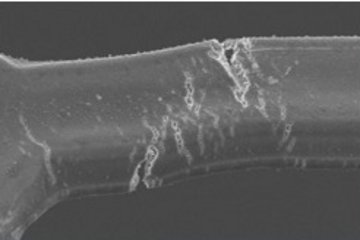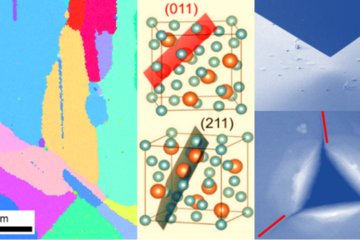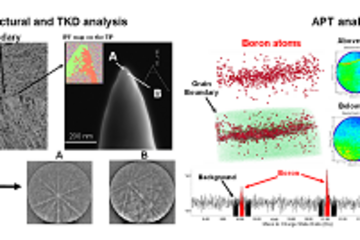All genres
21.
Journal Article
Activation and fluoride-assisted phosphating of aluminium silicon coated steel. ACS Applied Materials and Interfaces 5 (10), pp. 4224 - 4232 (2013)
22.
Journal Article
The influence of halides on the initial selective dissolution of Cu3Au (111). Electrochimica Acta 85, pp. 384 - 392 (2012)
23.
Journal Article
Studies on Wetting Behaviour of Hot-dip Galvanizing Process by use of Model Specimens with Tailored Surface Oxides. Surf. Int. Anal. 44 (8), pp. 1009 - 1012 (2012)
24.
Journal Article
Initiation and inhibition of dealloying of single crystalline Cu3Au (111) surfaces. Journal of the American Chemical Society 133 (45), pp. 18264 - 18271 (2011)
25.
Journal Article
Tailoring Model Surface and Wetting Experiment for a Fundamental Understanding of Hot-dip Galvanizing. ISIJ International 51, 10, pp. 1703 - 1709 (2011)
26.
Journal Article
Atomic force microscope imaging and force measurements at electrified and actively corroding interfaces: Challenges and novel cell design. Review of Scientific Instruments 82 (2), pp. 023703-1 - 023703-8 (2011)
27.
Journal Article
In-situ Scanning Tunneling Microscopy Study of selective dissolution of Au3Cu and Cu3Au(001). SI, pp. 1694 - 1700 (2011)
28.
Journal Article
Dealloying Studies of Cu3Pd Single Crystal Surfaces. ECS Transactions 33 (35), pp. 31 - 37 (2011)
29.
Journal Article
Effect of shot-peening on the oxidation behaviour of boiler steels. Oxidation of Metals 76 (3-4), pp. 233 - 245 (2011)
30.
Journal Article
In situ scanning tunneling microscopy study of selective dissolution of Au3Cu and Cu3Au (001). Electrochimica Acta 56 (4), pp. 1694 - 1700 (2011)
31.
Journal Article
Corrosion behaviour of Fe–Al(–Ti) alloys in steam. Intermetallics 18 (7), pp. 1375 - 1378 (2010)
32.
Journal Article
Electrodeposition of Zn and Au–Zn alloys at low temperature in an ionic liquid. Physical Chemistry Chemical Physics 12 (9), pp. 2059 - 2062 (2010)
33.
Journal Article
The electrodeposition of copper onto UHV-prepared GaAs(001) surfaces. Surface Science 603 (17), pp. L105 - L108 (2009)
34.
Journal Article
Gold model anodes for Li-ion batteries: Single crystalline systems studied by in situ X-ray diffraction. Electrochimica Acta 53 (21), pp. 6064 - 6069 (2008)
35.
Book Chapter
Mechanistic studies of initial dealloying. In: RSC Nanoscience and Nanotechnology, 22 (Eds. Wittstock, A.; Biener, J.; Erlebacher, J.; (editors), M. B.). RSC Publishing, UK (2012)
36.
Conference Paper
Dislocation Engineering and its effect on the oxidation behaviour. Materials at High Temperatures 29, pp. 116 - 122 (2012)
37.
Talk
Tailoring microstructures from amorphous precursors: crystallization and corrosion in Fe-based amorphous alloys. EMN Meeting on Metallic Glasses 2016, Kuala Lumpur, Malaysia (2016)
38.
Talk
Nanomechanical testing under environmental conditins of Fe-based metallic glasses. 22st International Symposium on Metastable Amorphous and Nanostructured Materials, ISMANAM 2015, Paris, France (2015)
39.
Talk
Grain Boundary Sulphidation of Nickel-Based Alloys applied in High-Efficient Coal-Power Plants. EUROCORR 2014 , Pisa, Italy (2014)
40.
Talk
Glass vs. crystal: Element-resolved corrosion analysis of gradually devitrified Fe-based alloys. Talk at University of Göttingen, Göttingen, Germany (2014)











